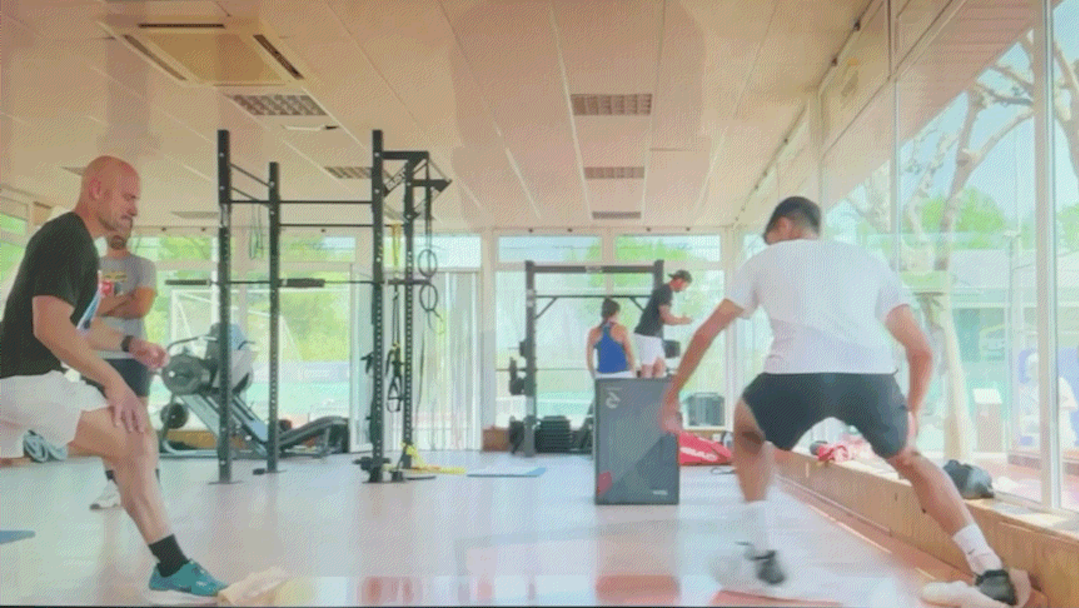We are almost up to what feels like the halfway point of a stretching routine that I have been breaking down over the past few weeks. I largely credit the full sequence with resolving my lengthy battle with plantar fasciitis. It has become my daily habit to prevent relapse and also for muscle activation before playing tennis or engaging in high-impact aerobic training. Today’s featured part of that routine is a Quadruped Alternating Toe Mobility Stretch.
When I was at the height of pain from plantar fasciitis, I found that stretching my toes from the quadruped position allowed me to maximize the range of motion while also precisely controlling the pressure and strain I was putting on the bottom of my foot. As an extra benefit, this movement also activates the knees and hips. If I only had time to perform one stretch before taking the court, this is the one I would choose.
Starting from the “all fours” quadruped position, this exercise is performed by curling the toes of one foot under as if trying to move the ball of the foot to the mat. I then bend my knees and shift my hips back toward the heel until the maximum range of motion in the foot is achieved. After a short pause, I return that foot to the starting position, and the sequence is repeated on the other leg. I perform this stretch alternating from side to side for a minimum duration of 30 seconds.
I couldn’t find a good video of my precise variation, so I made my own. That short clip can be found on YouTube if the embedded video below is blocked by your browser or email client.
If the volume is cranked up on the video, you can hear a cracking noise when I perform this stretch on the left side. It is a great illustration of how this exercise benefits more than just the feet because the cracking is from my knee and hip rather than the ankle. In fact, if I am stiffer than usual when I perform the first few iterations, I can actually feel the stretch all the way up my leg to the piriformis, which is the glute muscle that attaches the lower spine to the thigh.
Beyond its direct benefits for toe mobility, this stretch is particularly valuable for improving foot and ankle range of motion, which addresses another root cause of plantar fasciitis. Activating the ankles before playing tennis is important, as explosive movements and quick stops apply incredible force to those muscles and joints. If the ankles aren’t functioning smoothly, footwork can become restricted. That can lead to compensations that strain other parts of the body.
If you’re new to this stretch, I recommend taking your time with it. Start with gentle movements, and gradually increase the depth of your hip shift as your mobility improves. The key is to find the extent of your personal range of motion while maintaining control rather than forcing a deeper stretch than your body is ready for.
I’d love to hear how this stretch works for you! If you’ve battled plantar fasciitis or have noticed improvements in your mobility after incorporating it, drop a comment below or on the YouTube video. As always, consistency is key, so whether you’re using this stretch for rehab, pre-workout activation, or daily mobility work, keep at it, and your feet (and the rest of your lower body) will thank you.



